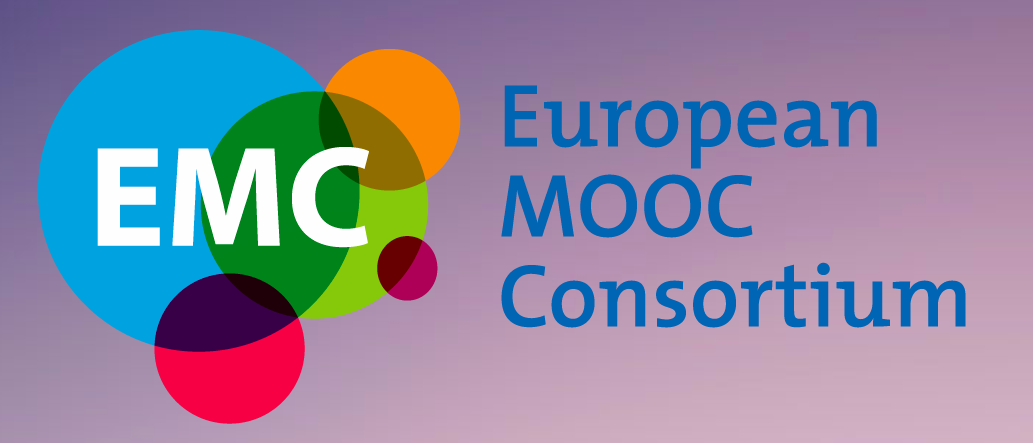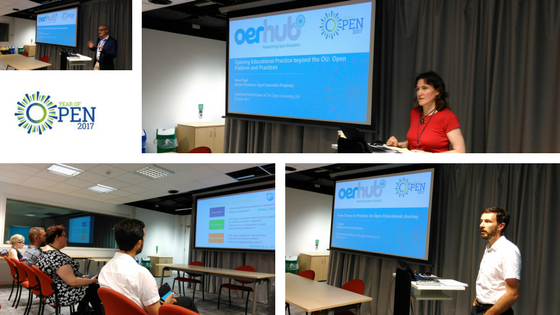A BLOG POST BY KARI ARFSTROM PhD, Executive Director of the Flipped Learning Network
As a Fellow of the OER Research Hub Project at the Open University in Milton Keynes, UK, I had the incredible opportunity to visit for two weeks in September, 2013. The Project and Fellowship program is supported by The William and Flora Hewlett Foundation. I was immersed in studying how K-12 educators are aware of, using or creating open educational resources, particularly in a flipped classroom.
The highlight of this academic and educational exchange was two site visits to see how schools in the UK are implementing flipped learning –at an institution of higher education and a secondary school. On a typical rainy fall afternoon, Dr. Beatriz (Bea) de los Arcos, Claire Walker, both from the OER Research Hub, Fellow Daniel Williamson with OpenStax College, an OER project based in Texas, and I spent the day with instructors at the Milton Keynes College (MKC), what in the States we’d refer to as a combination vocational high school and vocational training college. With most students between the ages of 16-22 this bustling training academy is similar where my father taught for most of his academic career in Minnesota. The same vocational programs offered in the States were evident in the UK. MKC offered careers such as beauticians and massage therapists, chefs and cooks, and automotive mechanics; good paying jobs that cannot be outsourced, and courses for students who are not yet proficient in English. These departments are or in the process of adding flipped learning to their classrooms.
It was the first week of classes at MKC, but students were active and engaged wherever we visited – the students in the cosmetology classes were working in small groups, making presentations and watching videos of direct instruction on their own so they could have more hands on time with their instructors while in class. The culinary arts students were watching basic demonstration videos made by the head chef so when they came to class they could practice what they viewed, getting immediate feedback from the head Toque. The staff in the automotive department were just starting to explore the idea of flipped learning, again putting the direct instruction online so in-class time could be better utilized for hands on, personalized learning. Instructors in the ELL classes had already collected a number of videos, ensuring they were meeting the needs of their students in order for them to succeed. Here was a progressive vocational school that was meeting the needs of their students and quickly shifting from teacher-centered classrooms to student-centered learning environments.
The second site visit was at Denbigh School, also in Milton Keynes, a planned suburban community approximately 45 minutes north of London. This secondary school enrolls local students ages 13-18. In this high-achieving school students are divided into six smaller units within the building, each named for scientist or engineer. Claire and I were greeted by Assistant Head Teacher Helen Brown who introduced us to two soon-to-be graduating young women who gave us a tour of the school and candidly spoke about their classes and preparation for University. It was very refreshing to talk with such thoughtful students. After the tour we met with administrators of their onsite teacher preparation program. The States could learn a few lessons from this full-year paid internship. Each new teacher is paired with a master educator who works with them throughout the year. The cohort of new teachers meets weekly working from a national framework to obtain their certification. The cohort also meets with each other for ongoing support throughout the year as they master their content, classroom management and their new careers.
After a fabulous meeting with the democratically elected student council, I met with around 35 teachers and held a training workshop with Bea and Fellow Thanh Le with the Vital Signs OER project in Maine. Even after a long day of teaching, the educators were very interested in hearing more about flipped learning. With lots of examples and stories of how other educators in similar classrooms and circumstances were adapting this new model, the attendees organized themselves into subject-alike groups within three days after the training. They were already looking at videos for inspiration, creating their own, and forming smaller professional learning communities to assist and support each other. It was exciting to see how quickly these top-notch teachers saw the benefits of Flipped Learning and were pulling it into their classrooms, no matter the subject or past experience with using or making videos.
Best of luck to all the educators –and students– at both schools!






[…] over to The Open University in Milton Keynes as an OERRHub fellow. Kari blogged about her visit here; one of the things we did together during her stay was draw up a first draft of the infographic […]